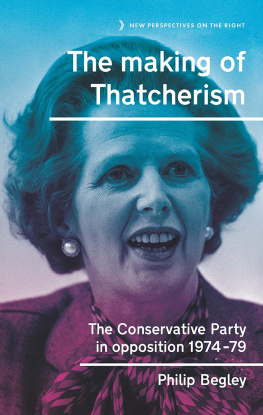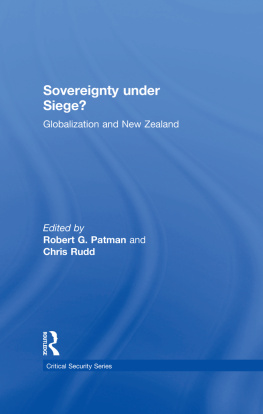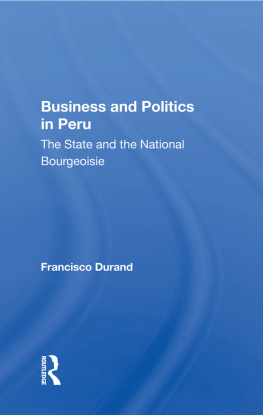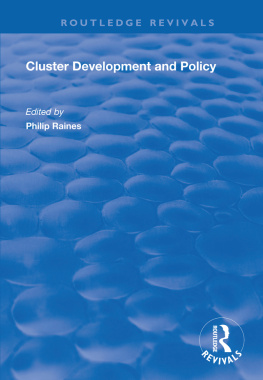State Under Siege
For My Parents,
First published 1998 by Westview Press
Published 2018 by Routledge
711 Third Avenue, New York, NY 10017, USA
2 Park Square, Milton Park, Abingdon, Oxon OX14 4RN
Routledge is an imprint of the Taylor & Francis Group, an informa business
Copyright 1998 by Taylor & Francis
All rights reserved. No part of this book may be reprinted or reproduced or utilised in any form or by any electronic, mechanical, or other means, now known or hereafter invented, including photocopying and recording, or in any information storage or retrieval system, without permission in writing from the publishers.
Notice:
Product or corporate names may be trademarks or registered trademarks, and are used only for identification and explanation without intent to infringe.
ISBN-13: 9780813336077 (pbk)
Contents
PART ONE
STATE DEVELOPMENT AND POLICY CHOICES, 19681995
PART TWO
STATE POWER AND SOCIAL CONTROL
Guide
After having been overlooked or dismissed for decades, the concept of the state has become central in most works of comparative politics. Almost no analysis of comparative political phenomena is now written without at least mentioning the states role, policies, or capabilities. Scholars carrying out cross-national studies in state formation or state-society relations have engaged in solid middle-level theory building.
This book hopes to contribute to these efforts through an important case study. States are very much a product of their specific historical experiences and interactions with their societies and thus lend themselves to a case study approach. The focus of this study is a country that has undergone some of the most dramatic changes in state capabilities in Latin America. Through an empirically grounded case study, it examines the factors that influence state capabilities and how they change over time.
The introductory chapter presents the theoretical framework used throughout my analysis. The remainder of the book is divided into two sections. In it is argued that the Fujimori regime embarked on a program to reconstruct state power and expand the capabilities of the Peruvian state as a response to the crises of the previous two decades. Whether this project will succeed over the long term remains to be seen, but it nonetheless illustrates how state capabilities must be viewed in the context of changing societal and international forces.
In draws some comparative implications of this study for other countries in the region.
The process of writing and researching this book has taken close to a decade, and there are many people during that period who helped to motivate, inform, and inspire me. Alfred Stepan and Douglas Chalmers at Columbia University patiently guided my initial steps in this project, while my friends and cohorts at the Institute of Latin American and Iberian Studies at Columbia provided support and a critical ear. I owe a large debt of gratitude to many Peruvian friends and colleagues, particularly at the Instituto de Estdios Peruanos where I was a visiting scholar during 1987 and again between 1988 and 1990. Among the many people whose conversation and criticisms helped me formulate and refine my ideas were Julio Cotier, Romeo Grompone, Aldo Panfichi, Fernando Rospigliosi, Carlos Ivn Degregori, Fernando Tuesta, Michael Azcueta, Juan Granda, Cynthia McClintock, Max Cameron, and Jo-Marie Burt. I especially appreciate the support and criticisms of Carol Wise, whose comments on earlier versions of the text were very helpful. I also must thank the librarians at the Universidad Catlica, the Biblioteca Nacional, and the Centro de Estdios Histricos-Militares, whose assistance was invaluable. The Graduate College and the College of Social and Behavioral Sciences at the University of Northern Iowa generously provided funds to prepare the final manuscript.
Finally, I am thankful for the support and inspiration of my wife, Miryam Antnez de Mayolo, who has been my source of strength as this book took shape.
Philip Mauceri
1
Introduction: State Power and Policy Making
The Plaza Dos de Mayo in downtown Lima is usually bustling with street vendors and decrepit buses carrying people to and from Limas outlying shantytowns. On a summer January morning in 1988, however, several hundred persons had nearly filled the plaza. They had gathered in front of the headquarters of the Confederacin General De Trabajadores del Per (CGTP), where they shouted anti-government slogans. The CGTP had called this demonstration during what would be the first of five national strikes in 1988 to protest a series of government austerity packages. Yet the events of the day would make this more than just another anti-government protest. As union leaders and United Left politicians denounced the government of President Alan Garca, a group of some fifty persons marched into the plaza shouting the slogans of the Maoist guerrilla group, Sendero Luminoso: "Viva la Guerra Popular! Viva Presidente Gonzalo!" Within seconds, dynamite exploded behind the crowd and people began to run in terror. Amid the panic and confusion, the intruders quickly moved toward the center of the plaza, firing their pistols into the air. As they did so, armed members of the Communist Party ran out of the CGTP headquarters with their own weapons, surrounding their leaders and firing at the senderistas. While the two groups exchanged fire, the police stood by, apparently unwilling to get involved. The ensuing street battle lasted several minutes until the senderistas dispersed down nearby streets.
For many Peruvians, the events of that day came to symbolize one of the key problems facing their country: violence and the inability of the state to guarantee basic public order. As insurgent forces expanded, the state seemed unable, and at times even unwilling, to confront these groups. State policy makers also seemed unable or unwilling to confront the countrys recurring economic crises. State responses to the economic crisis alternated ineffectually from orthodox to heterodox policies, as the debt burden increased, production declined, and the national income plummeted. Meanwhile, state resources themselves declined precipitously as a result of a dwindling tax base and hemorrhaging public enterprises.
This book will examine the factors contributing to changing state capacities in Peru from the Velasco military regime (19681975) through the Fujimori regime of the 1990s. The military regime set into motion the most sweeping set of socioeconomic changes in Perus recent history. Through the agrarian reform program, the countrys traditional land-based oligarchy was virtually eliminated. Union and peasant organizations expanded exponentially, and the industrialization fostered by import substitution policies greatly increased the role of the urban working classes. Urbanization, which had been taking place since the 1950s, turned into a flood that overwhelmed the cities.
The changes begun during that regime created new challenges, conflicts, and limitations for a historically limited state. First, these changes gave rise to new radical political movements, both electoral and armed insurgent, that through the 1980s effectively challenged state prerogatives, strained state resources, and exacerbated conflicts and contradictions within the state and between the state and society. Second, the developmentalist economic model adopted in the early 1970s created a series of internal and external vulnerabilities, notably a large debt and an expanding state sector, which led to serious tensions between business elites, government leaders, and international financial organizations. The policies of successive governments, both authoritarian and democratic, appeared only to exacerbate this situation. Policies adopted to deal with the economic crisis and counterinsurgency contributed to a growing polarization in society, increased Perus isolation in the international arena, and reduced the resources and capabilities of the state bureaucracy. By the early 1990s a new search for order led to a regime intent on restructuring and strengthening the state apparatus, even if this meant sacrificing democratic norms and institutions.










